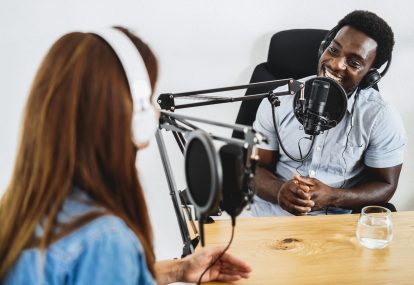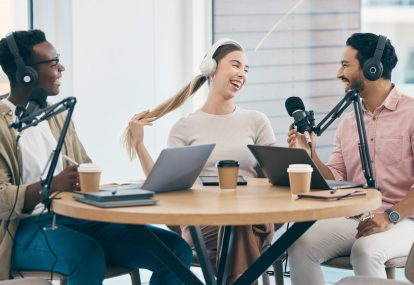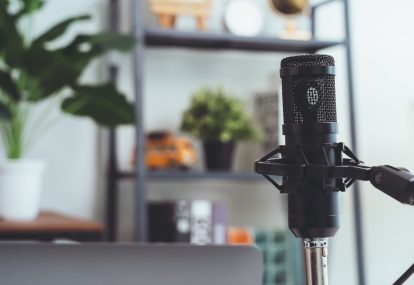Podcast has been one of the greatest medium of communication and branding today. As audio technology advances, the process of recording and editing has been revolutionizing from time to time. More devices and software are being produced in the market nowadays that almost any professional or enthusiast can get their hands around them. May it be a computer, audio interfaces, sound cards to portable recorders and microphones and even your smart phones, they all have that capability to record and edit audio.
Although, it sounds easy we should expect that not everything is going to be a piece of cake. At least not all the time. We often encounter challenges like “how do I record?” or “what software should I use?” And the most common question, “how do I remove noise in my recorded audio?”
What is Noise?
As for the basic definition on noise in audio:
“Noise in audio, recording, and broadcast systems refers to the residual low level sound (usually hiss and hum) that is heard in quiet periods of a program.”
The hiss and hum are the usual factors that contribute to that unwanted sound in our recordings. The industry that demands the importance of audio, like for voice overs, film, music, radio, audio books and even podcasts,will always strive for a good quality audio. Not only that it benefits them financially, it also ensures them the image of having the best audio quality – on which the consumers demand from any audio industry.
Imagine listening to a bad sounding music record, a noisy dialogue in an audiobook, or a podcast with a very good message but hard to hear. I bet you know what you’ll do next, most probably you’ll stop listening to it.
So knowing the importance of audio and knowing how to enhance or clean them can be a great advantage for you. So let’s get on with it!
How Noise Reduction works
For now, we’ll be showing you the basics on how to approach them. But first, you will need to know what an audio plugin is.
Audio plugins, or we can call them a program or an application for processing audio, and other software have simplified the way we handle audio to make it sounding great. And yes, it is very much used to for audio clean up as well. There are a lot of noise reduction plugins or programs that do wonders in cleaning up audio. We will go over some concepts, techniques and tips on how to do this.
The basics of noise reduction often starts in getting a Noise Profile of your audio. Each audio audio plugin will have different ways to get this to be applied in the noise reduction process. The process is simple. The noise data from the file will first be interpreted, then the plugin will know what frequencies need to be cut or reduce from the audio file.
Other common parameters such as the Threshold and Reduction values will gauge in reduction of the noise from the original audio.
To put it simpler, the Threshold gauges on what audio level will the noise reduction “kick in” and the Reduction will set how much reduction will be applied once the plugin “kicks in”.
When you already have a Noise Profile, then you will now apply the right mix of the Threshold and Reduction values to remove the noise but not sacrifice the overall quality of the original audio. This might seem tricky but basically you need to use your ears for this. Also, use good speakers or headphone to make sure that you are hearing the true output of the noise reduction.
For now, we will use the Waves Z-Noise Plugin to show you how it works. This deals with the “hiss” noise.
Watch the video tutorial here:
Tools used:
Logic Pro X (it could be any DAW) | Z-Noise by Wave Labs
More Tips
Just to be clear, noise reduction plugins will always have its scope and limitations and this is why good and clean audio recordings will always be the best way to go before producing audio of your own.
As what the doctor would say, preventions is always better than cure. Right? But we can’t help it sometimes that we can get sick in spite of the effort of prevention we are taking.
Same goes for audio. So having this technology will also be a lifesaver in the field of audio because the last thing you want to do is re-record your audio, right?
Here are some added points that we’ll leave here:
- Always keep your equipment in check before doing any recording
- Have a good audio monitoring system, plainly, good sounding headphones or speakers
- If you’re using audio cables for microphones, mixers and others, make sure to check if it’s not giving the noise by using other cables and listen to the difference monitor the sound keenly and replace bad ones.
- Have your areas electric wiring and connections be properly grounded. This can sometimes get into your recordings
- Consider the area where you record your podcast like, background noise, appliances that can cause interference and other things that might get in the way of your recording
- And don’t forget to enjoy recording. Making your podcast shows should never be boring you should have fun doing it!
Share this post!




